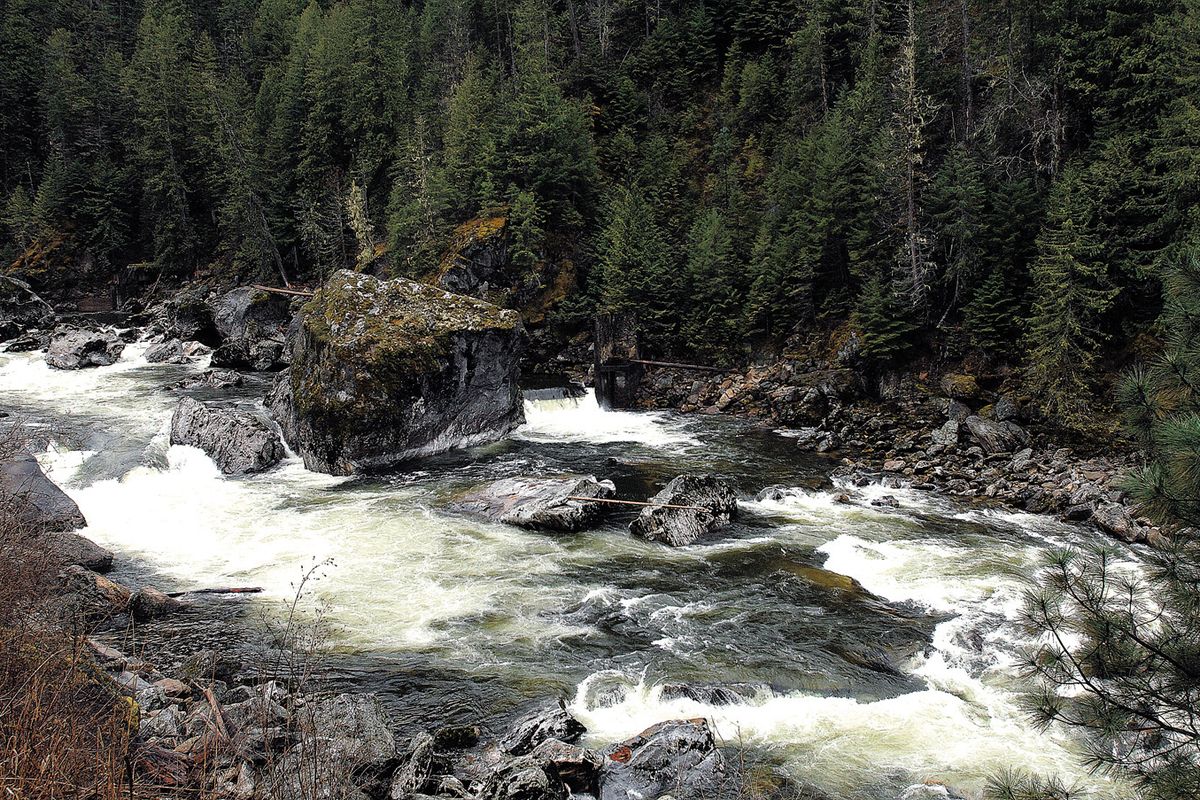Leaping to conclusions
Selway Falls pose challenge to wild steelhead ready to spawn
Selway Falls, on Idaho’s Selway River, is a formidable obstacle for steelhead as they head toward spawning beds upstream. Last week, steelhead were leaping the rapid to the right of the large rock at the center of the falls. Lewiston Tribune (STEVE HANKS Lewiston Tribune)
Wild steelhead are making the last push in their months-long journey that culminates with spawning in mountain creeks. But for those that began life in Idaho’s upper Selway River, the return home includes one last daunting challenge – Selway Falls.
The torrent of whitewater is not a falls in the strictest sense of the word. It’s more of a rapid, albeit a long, huge, nasty, snarling rapid.
Seemingly hundreds of steelhead have been stacked below the falls and struggling to leap up the cascading water. When watching the fish hurl themselves at the first stage of the falls, it seems few are successful.
Perhaps that is why the Idaho Department of Fish and Game and the U.S. Forest Service joined forces in the mid- to late 1960s to build a fish ladder around the falls.
The ladder is on the river-left (facing downstream) side of the falls and that is where most of the leaping activity takes place. It is essentially a tunnel at the base of the falls that takes fish around the toughest water and dumps them back in the river near the top of the cascade.
The structure includes a barrier dam near the bottom of the tunnel that looks like a horizontal spillway. Last week, several steelhead per minute attempted to leap the spillover on their way upriver.
Larry Barrett of the Idaho Department of Fish and Game speculated many of the steelhead likely attempt to climb the falls before finding the entrance to the ladder. But he also said because river flows are so low this year, the ladder may be difficult to find and more fish may be trying to pass the falls. The low water might make that more difficult.
Just as some rapids become more treacherous for rafters as river flows drop, the falls might require more out-of-water leaping when there is less water in the river.
Researchers who fixed radio transmitters in steelhead in the mid-1990s found that a high percentage of the fish headed to the upper Selway took advantage of the ladder.
But steelhead don’t necessarily need the ladder. They were in the upper Selway long before its construction.
“My understanding is it was put there just to make it a little easier for fish to get through there,” Barrett said.
Steelhead fishing is not allowed on the Selway or its sister river, the Lochsa. The two rivers flow together at Lowell to form the Middle Fork of the Clearwater.
Both rivers are wild steelhead sanctuaries. Barrett said Selway steelhead have not been studied a great deal. It is assumed most of them are B-run steelhead that spend two years in the ocean.
Few if any surveys are conducted in upper Selway River tributaries. But the department surveys streams in the summer, long after steelhead are done spawning. Barrett said those surveys always reveal a healthy population of rainbow trout or juvenile steelhead.
The fish have been putting on an impressive show at the falls. How long it will last is anybody’s guess.

